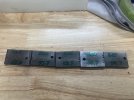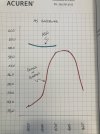Bühlmann
North Lake Forge
- Joined
- Jan 6, 2022
- Messages
- 475
I had two blades come out of HT soft. They both had a 10 min soak at 1525F and quenched in AAA. Came out at 45-50 HRC after 2x 385F tempering cycles. I’m confused as to how this happened, but more importantly what is the best way to “reset” the steel for another attempt at austenitization?
ETA: Not decarb. Surfaces were properly prepared post-HT for hardness testing. They are definitely soft.
ETA: Not decarb. Surfaces were properly prepared post-HT for hardness testing. They are definitely soft.
Last edited:


